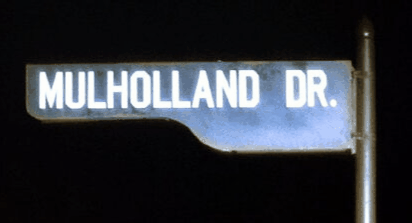Cornerhouse, Manchester
6 March to 17 April 2004
Cornerhouse’s visual arts director Kathy Rae Hauffman has come in for much criticism from local artists in the past year. The cry of ‘New Media New Danger’ has echoed around town as the arts centre has focused predominately on big budget digital arts and an increasingly education orientated vision. A Eurocuro model of willed interdisciplinary speed networking is predictably common in similar spaces globally, and one that looks dated, stiff and very much out of synch with Manchester’s predominately artist-led infrastructure. The Ljubljana collective IRWIN, however, seemed perfectly suited to the new state-approved all-electric Cornerhouse.
As with most pretenders to the avant-garde throne, the group are overwhelmingly concerned with self-mythologisation. Much of the exhibition was devoted to this diversion and the ever-thorny issue of historification. The first floor was dedicated to a detailed archive of books and videos that gave a real insight into IRWIN’s activities within the larger Neue Slowenische Kunst collective over the past twenty years. There was an opportunity to see footage of the Black Flag on Red Square performance in addition to the establishment of the Moscow NSK state in time Embassy in 1992, one of the most influential of all apt-art projects. We also got to watch IRWIN discuss their readings of the psychoanalytic theorist Slavoj Zizek and follow their application of media theory in relation to the televised break up of Yugoslavia.
None of this is quite as beguiling as actually witnessing the group live, but it remains an absorbing way of locating them in their complex historical and political imaginary. The rich historical documentation reminds us that provisos such as ‘retro’ or ‘neo’ were difficult to apply in socialist states, devoid as they were of copyright or any meta-ideological means of distinguishing between the past, present and future. Despite this, I couldn’t help but think that the retro aspect of IRWIN’s dramatisation of totalitarian iconography seems so much more wittily pronounced in the post-socialist era. The stakes have lowered. Once seen as being dangerously flirtatious with communist and fascist imagery, it’s now difficult to distinguish IRWIN from the playful militarism of 80s industrial bands or new wave anonyclones such as Devo or The Residents.
The second section of the exhibition cast a wider net, giving the space over to IRWIN’s ongoing document of Central and Eastern European art East Art Map. This project is easily more complex, moving far from the borders of the group’s primary activities to annex half a continent. In part, this was presented in uninspired end-of-the-pierennale fashion, IRWIN installing the kind of continuous multiple slide show of work that you will see squeezed in next to a documentary about the Petis-Pois Marketing Board (Give Peas a Chance) at next week’s Antarticentenial. This being the new Cornerhouse, the map itself takes the form of an interactive website that can be viewed in plan. Unlike a strictly linear modernist map of art movements exemplified by Alfred H Barr, the East Art Map functions as an open network. In many ways, however, it more closely resembles Charles Jencks’ chaotic flow charts of postmodern movements in art and architecture produced in the 70s and 80s. ‘New Europe’ (I’m sure it was there before) is certainly complex, but no more so than the rest of the continent, contradiction and mayhem, having always been bastions of culture, postmodern, post-socialist or postman. Despite its well-meaning endeavour to be amorphous and non-canonical, the East Art Map will inevitably function as a global real estate guide to the art market of the newly expanded EU.
The next gallery offered a series of newly commissioned cover versions produced by IRWIN of the 1960s Slovenian conceptual group OHO. IRWIN follows the land art diagrams left by OHO to the letter. The results are photographed and slickly presented as large prints. Of course, the reconstructions are entirely unnecessary since the original instructions are enough for the audience to go on. By producing their own official reconstructions, IRWIN deliberately act as cultural ambassadors. As secret emissaries embarked on a deadly ‘search-and-critique’ mission, this is an administrative role that they have always occupied ironically. Finally we came to the spectre of the avant-garde that haunted the exhibition, The Corpse of Art – an eerie waxwork effigy of the Holy Comrade of the Immaculate Right Angle – Malevich lying in state. Malevich, was embraced by the early Soviet Union, then expunged by Socialist Realism. IRWIN’s re-writing of history seems farfetched, but is no less so than the Russian Federation’s desperate quest to recover enough Romanov corpses to reconcile the modern democracy with its sinister imperial past. Resembling the false idol Rasputin, Malevich preserved in aspic personifies the idea of utopia being unachievable but perpetually intimated by institutions that have a vested interest in maintaining the status quo. Hopes may rise on the Grasmere.


